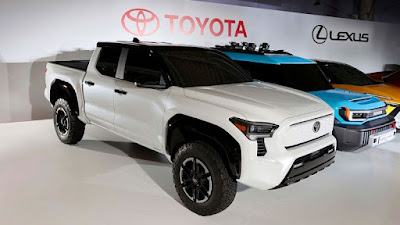The Legend is back Finally Stellantis officially launched an electric car concept called the Chrysler Airflow Concept at the CES 2022 exhibition in Las Vegas, United States. The concept car was briefly reviewed at the Stellantis EV Day and Software Day presentations at the end of 2021, where the Chrysler Airflow was presented as Chrysler's first battery electric vehicle due in 2025.
 |
| Finally the Airflow Concept revealed at the CES 2022 as the first battery electric vehicle of Chrysler. (Picture from: AiraTransport) |
This is because the brand has promised to move into the line of electric cars by 2028. And to represent "the future direction of the Chrysler brand," the Airflow Concept provides a compelling glimpse into the future and design language of Chrysler's all-electric. Plus, the fully connected customer experience and advanced mobility features this future EV (electric vehicle) will offer.
 |
| The Airflow Concept provides a compelling glimpse into the future and design language of Chrysler's all-electric vehicle. (Picture from: Auto-Motor-und-Sports) |
From a design standpoint, the Airflow Concept proudly features the Chrysler Wing logo tied to the car's grille/light bar illuminated with crystal LED headlights. This vehicle has an elegant yet athletic profile thanks to its low ride position, sleek roofline, two colors and muscle car feel.
In addition, the long wheelbase and wide track, along with large 22-inch rims, contribute to a steady stance. This at the same time provides “excellent handling and dynamic performance.” At the rear, the crystal LED headlights are joined by a light bar that accentuates the wide position of the vehicle, with the illuminated Airflow inscription placed between the lights.
 |
| The technology is seamlessly integrated in the Chrysler Airflow Concept's cabin in the form of a dark glass sculpture. (Picture from: OtoBisnis) |
Despite using a well-known name from Chrysler's past, the only reference to aerodynamics in its press release is about "aerodynamics, a smooth underbody". This helps the car achieve optimal driving range. Inside, the Chrysler Airflow features an open and spacious lounge area thanks to a panoramic roof, functional and ambient lighting, and soft leather seats resting on pedestals.
Also, the technology is seamlessly integrated in the cabin in the form of a dark glass sculpture. The crystal texture on the start/stop buttons and steering controls is a nice touch. The interior is more than just a fun place to spend time. Chrysler Airflow integrates the new STLA Brain and STLA SmartCockpit software and electrical/electronic (E/E) architectures to provide seamless connectivity for drivers and passengers.
 |
| The interior is more than just a fun place to spend time. Chrysler Airflow integrates the new STLA Brain and STLA SmartCockpit software and electrical/electronic (E/E) architectures. (Picture from: OtoBisnis) |
The car's cabin is connected by connectivity, bringing the consumer's digital lifestyle into the vehicle, with state-of-the-art technology creating a customized space for each passenger. Using a menu-based format, screens or screens can be personalized, simplified, and grouped by individuals and interests. Information on the screen can be shared with all passengers with a swipe. Each screen serves as a personalized space to access the digital world through connected entertainment, apps and downloads.
There is even a built-in camera on each seat, allowing passengers to participate in group video conferencing. Obviously, the Airflow Concept benefits from over-the-air (OTA) updates as well as Artificial Intelligent based applications such as navigation, voice assistance, e-commerce marketplace, and payment services.
 |
| The Chrysler Airflow Concept is powered by two 150 kW (201 hp) electric motors, one at the front and one at the rear. (Picture from: Otomobile.id) |
But unfortunately the Stellantis did not reveal on which platform the Chrysler Airflow will be made. But what is clear, they say, is that this car is powered by two 150 kW (201 hp) electric motors, one at the front and one at the rear.
It is also powered by a battery designed to reach 350-400 miles (563-643 km) on a single charge and offers fast charging functionality. Judging from the forecast range and output, it is likely the STLA Medium architecture that Stellantis will use for 2024.
 And the concept is designed to accommodate larger capacity EDMs, “offering the potential for future high-performance applications.” Chrysler also said that the Airflow Concept features the STLA AutoDrive Level 3 autonomous drive system, which can also be upgraded via an OTA update. *** [EKA | FROM VARIOUS SOURCES | CARSCOOPS ]
And the concept is designed to accommodate larger capacity EDMs, “offering the potential for future high-performance applications.” Chrysler also said that the Airflow Concept features the STLA AutoDrive Level 3 autonomous drive system, which can also be upgraded via an OTA update. *** [EKA | FROM VARIOUS SOURCES | CARSCOOPS ]Note: This blog can be accessed via your smartphone.




























